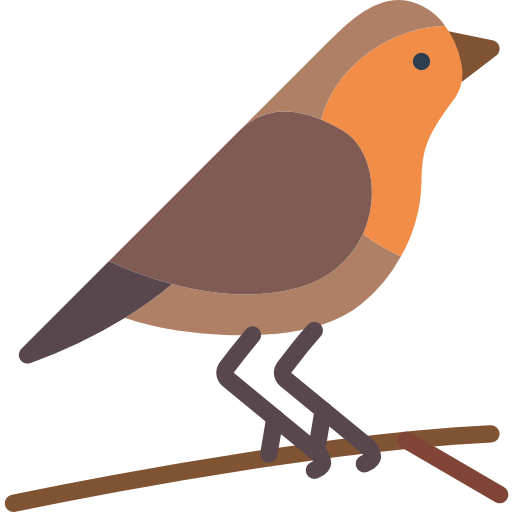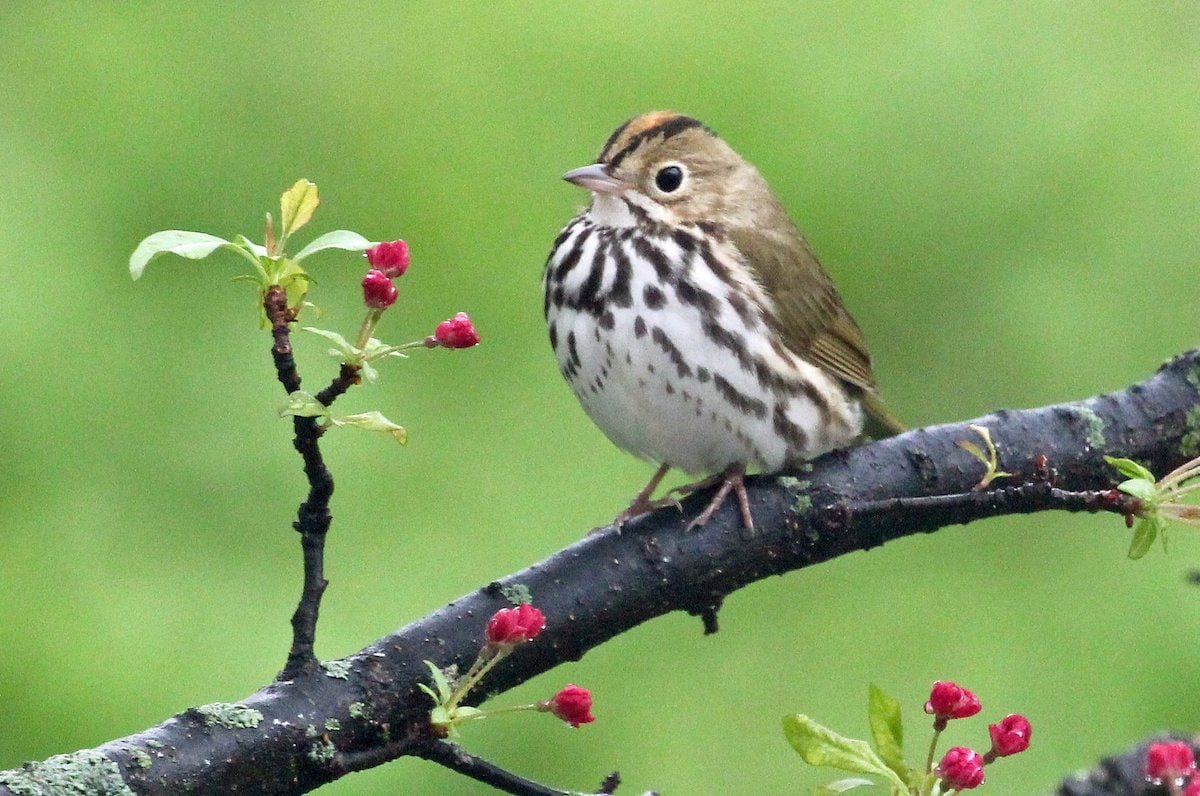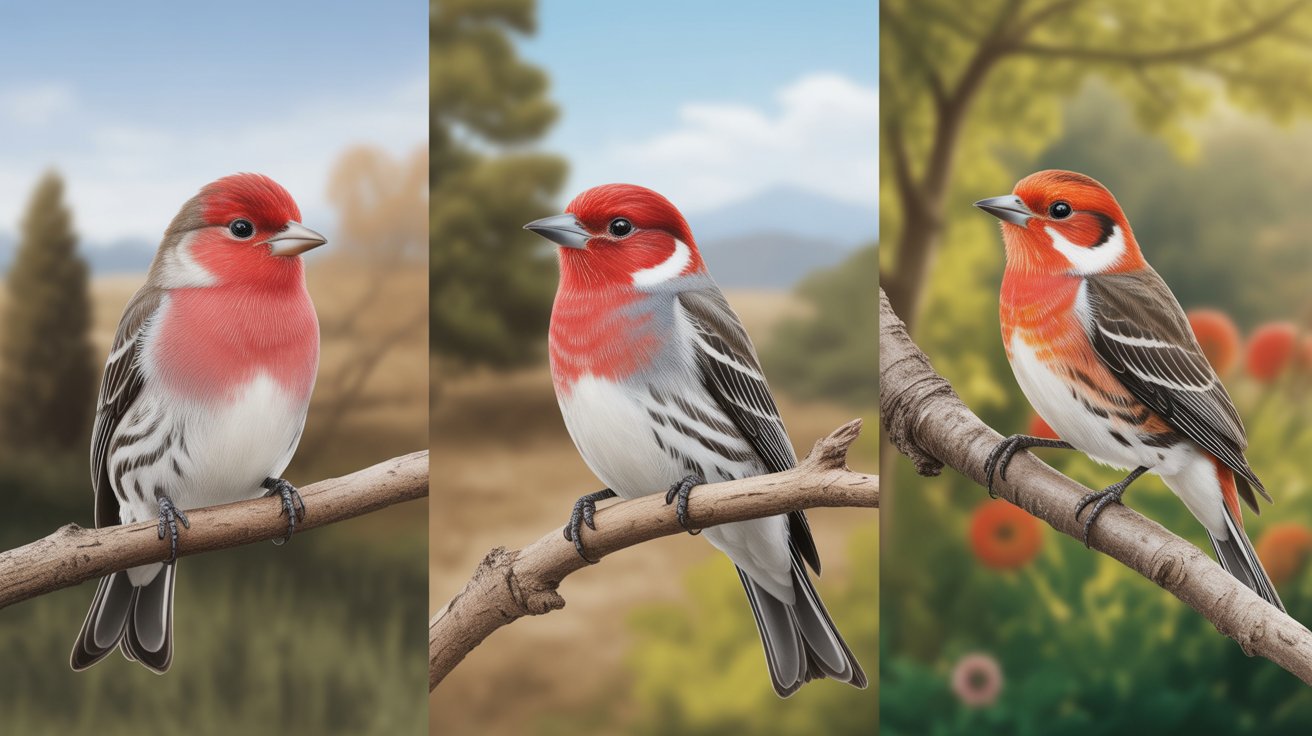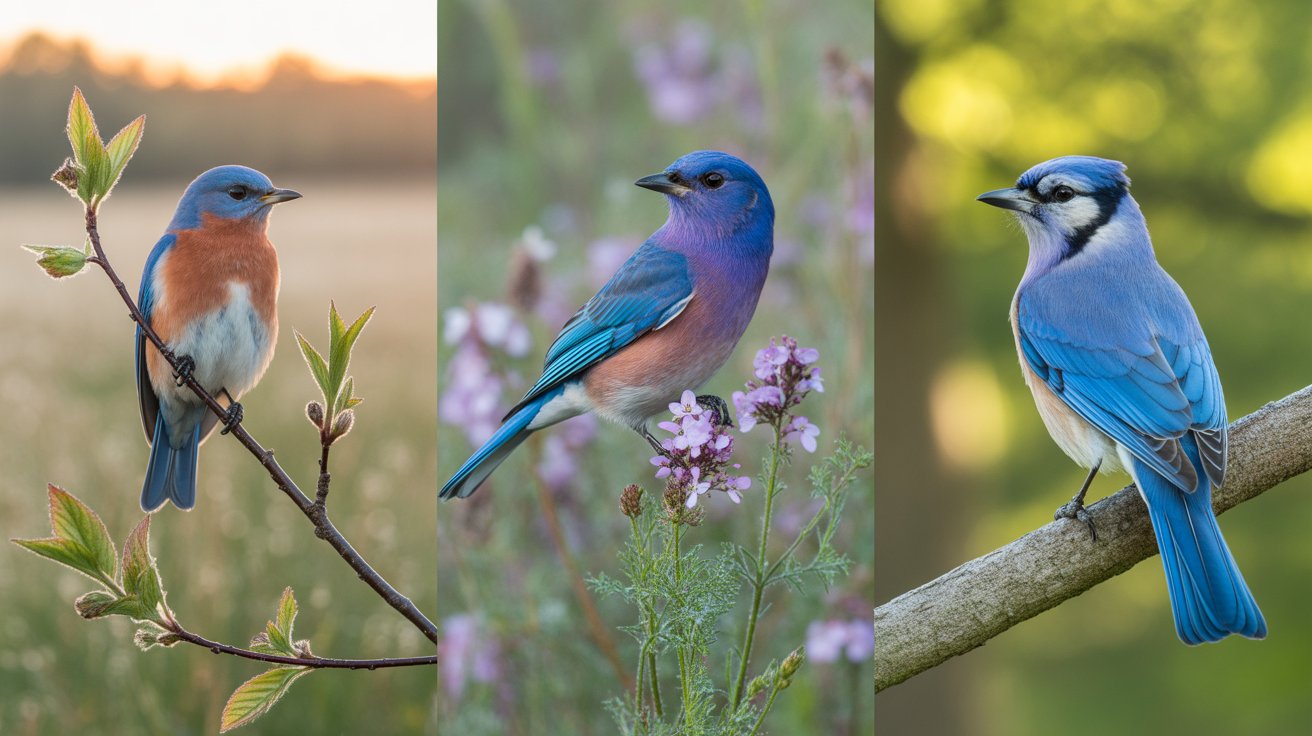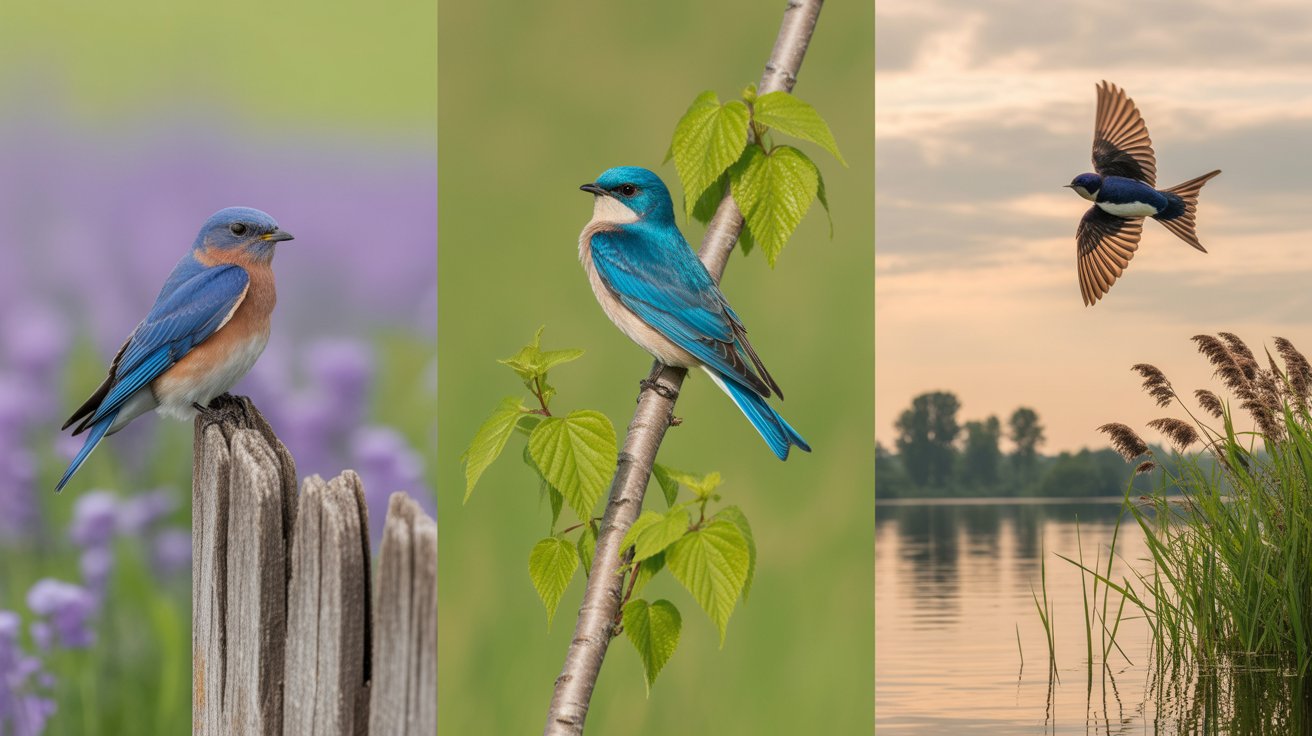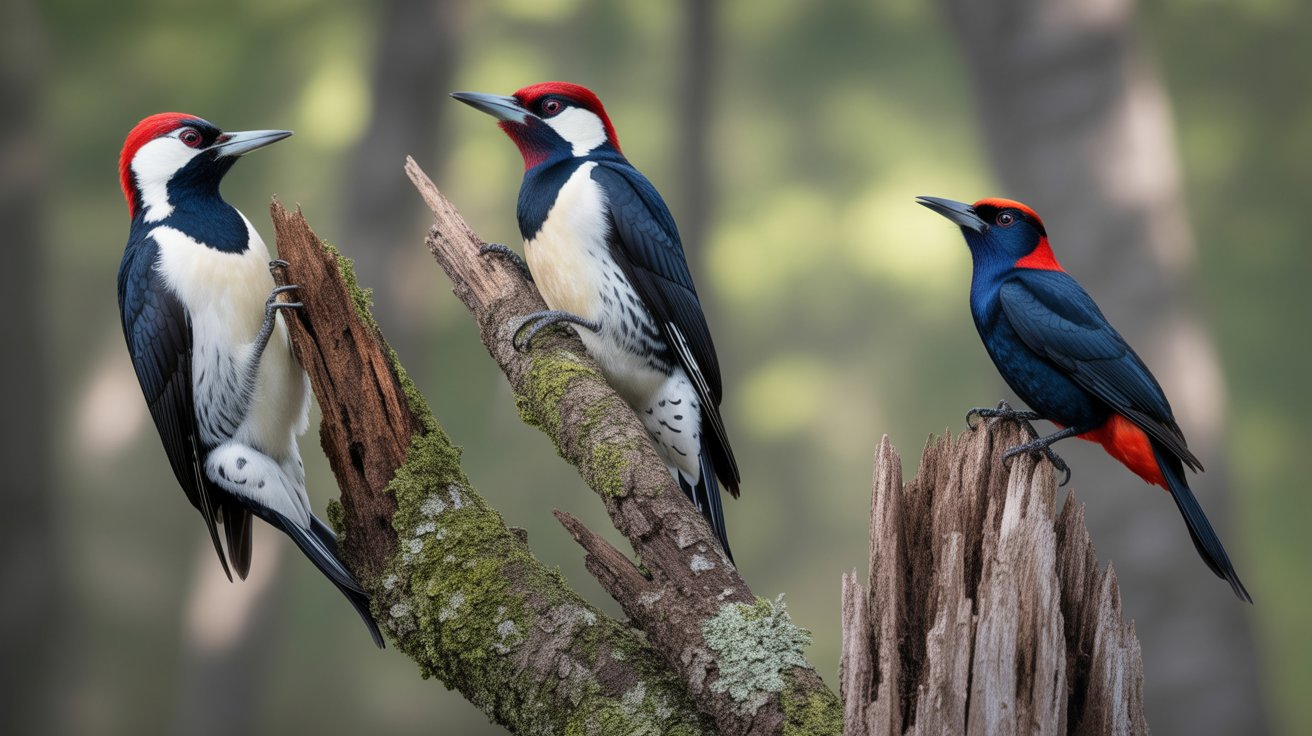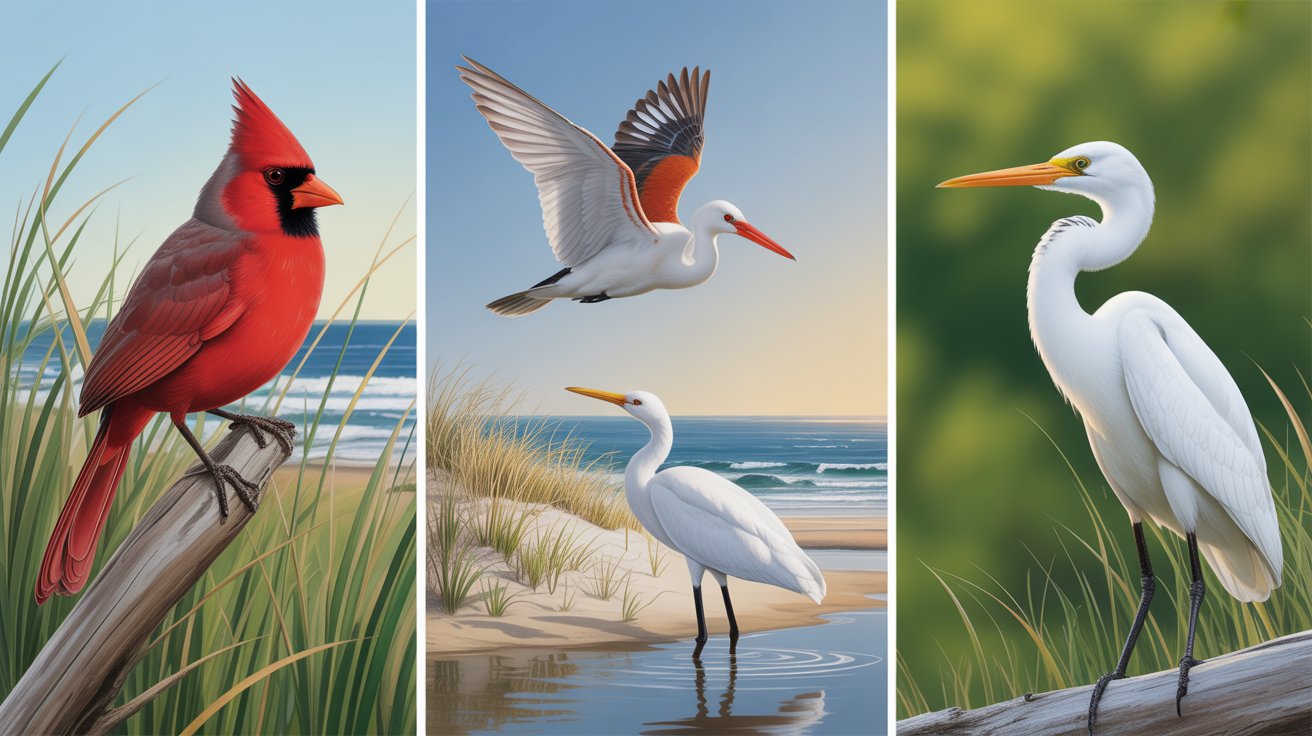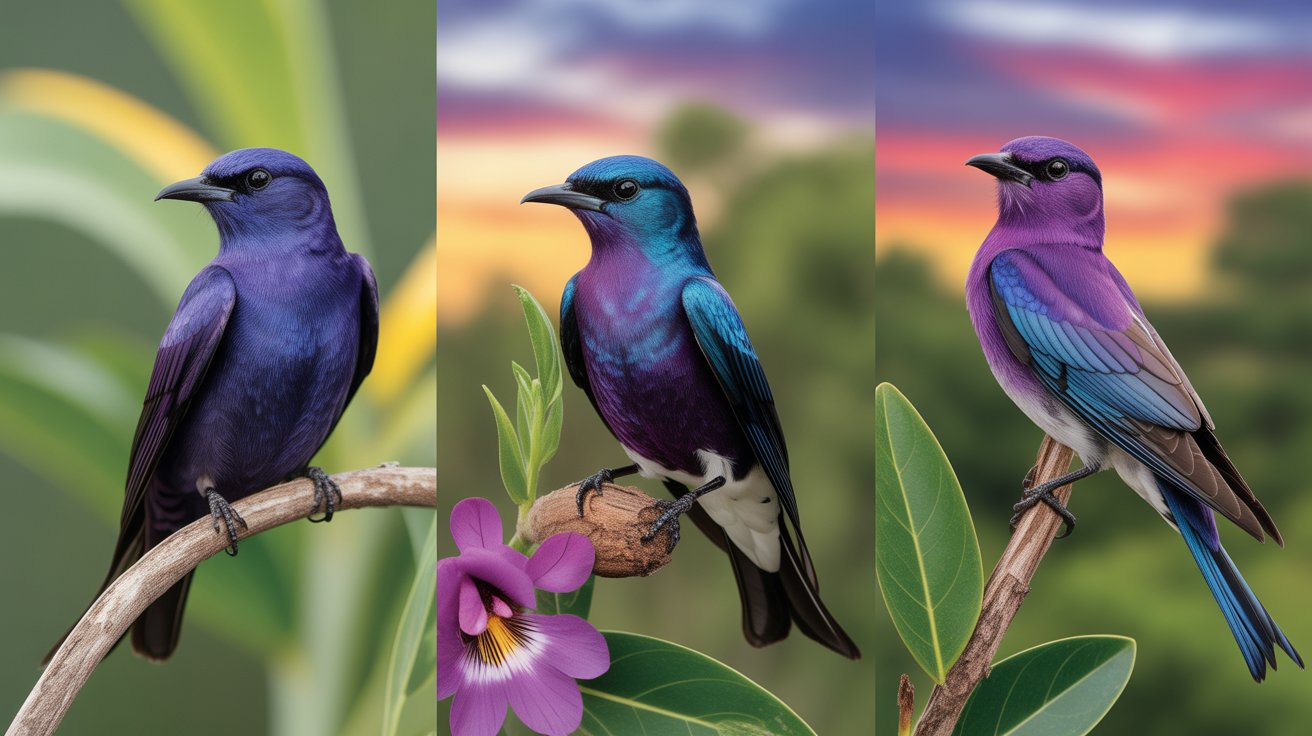If you’ve ever spotted a little brown bird with curious white spots hopping across your yard or flitting through the trees, you’re not alone. These charming birds are surprisingly common across many regions and can be both fascinating and frustrating to identify. Brown birds often get overlooked due to their subtle colors, but those unique white spots can help you narrow down what species you’re looking at.
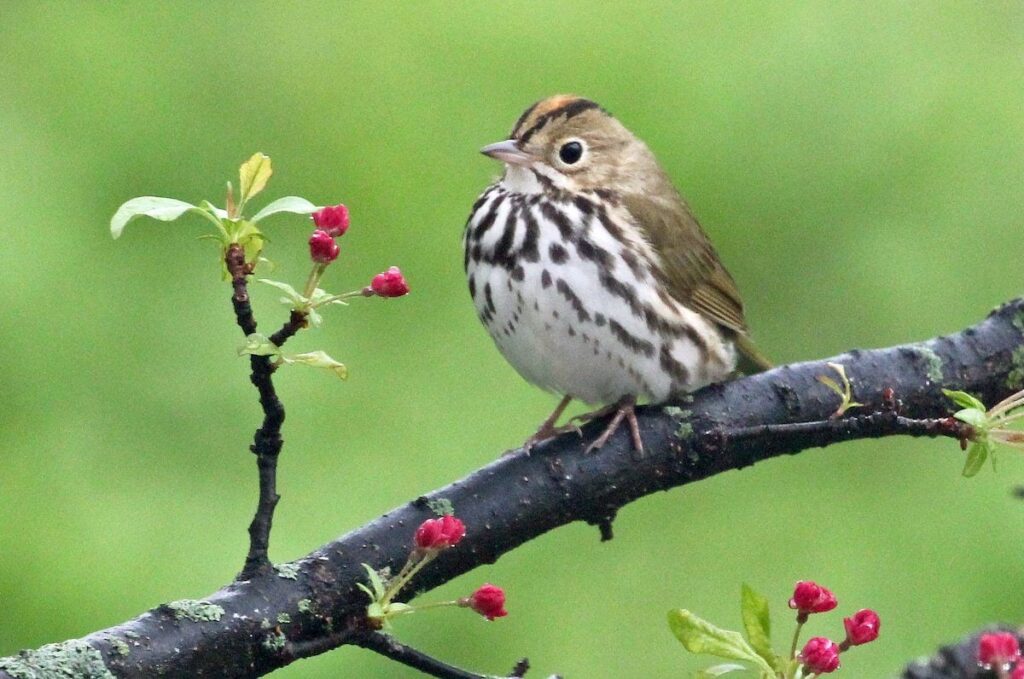
Maybe you’re a backyard birdwatcher trying to update your checklist, or maybe you’re just curious about the mysterious feathered visitor on your fence. Either way, learning about these speckled beauties helps you connect with nature and better understand the birdlife around you.
White spotting in brown birds isn’t just decorative—it often plays a role in camouflage, mating displays, or species identification. From woodpeckers and thrushes to flycatchers and wrens, these birds come in various sizes and behaviors, and they thrive in diverse habitats, from dense forests to suburban parks.
In this article, you’ll discover 12 beautiful brown birds with white spots. Each bird profile includes key identification features, fun facts, and detailed descriptions to help you spot them more confidently the next time you’re outdoors.
Let’s dive into the speckled world of these fascinating birds.
Contents
1. Northern Flicker
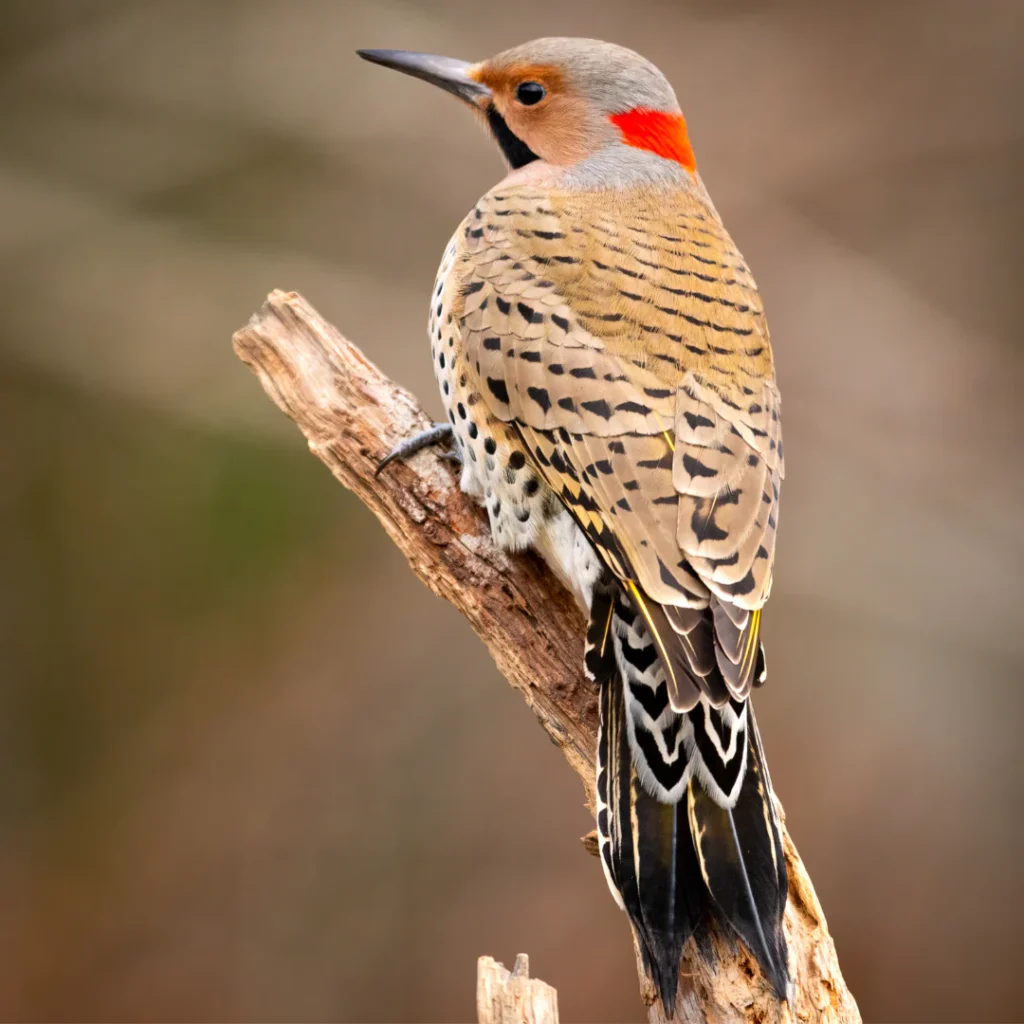
The Northern Flicker is a striking woodpecker with a brown body covered in black and white spots and bars. It’s easily recognized by its patterned plumage and its distinct “wick-a-wick” call.
While most woodpeckers stick to trees, the Northern Flicker is often found foraging on the ground for ants and beetles. Its white rump flashes when it flies, making it easier to identify even from a distance.
You’ll typically see two variations—yellow-shafted (in the East) and red-shafted (in the West). Both sport the classic spotted underparts and brown upper body.
Identification Details:
- Scientific Name: Colaptes auratus
- Wingspan: 16.5–20 inches
- Length: 11–14 inches
- Weight: 3.9–5.6 oz
- Habitat: Open woodlands, forest edges, suburban yards
- Diet: Insects (especially ants), fruits, seeds
Watch for the crescent-shaped black mark on its chest and the speckled belly. These birds are year-round residents in many parts of North America and are commonly seen at backyard feeders and on tree trunks.
2. Brown Thrasher
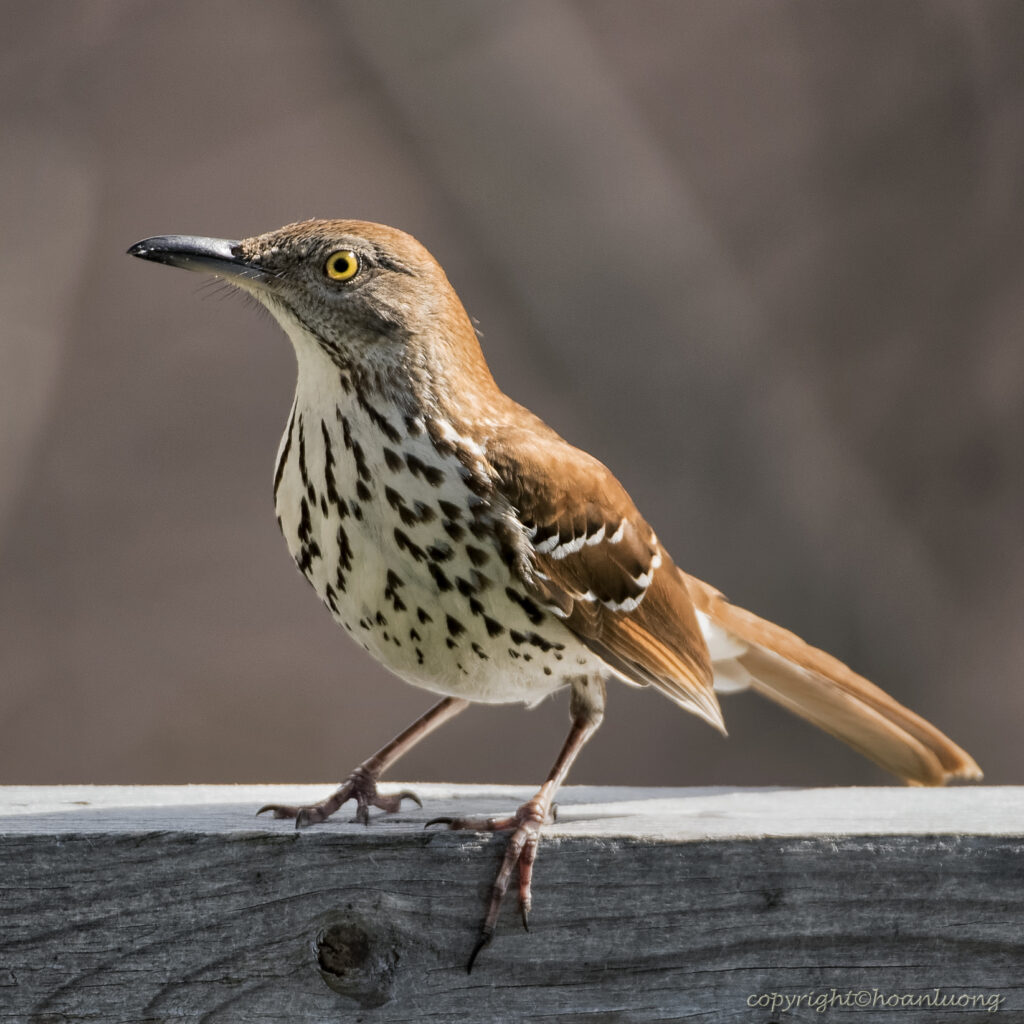
The Brown Thrasher is one of the more vocal songbirds in North America, capable of singing over 1,000 song variations. It’s a rich reddish-brown bird with bold, dark streaks on a white chest and belly.
It has a slightly curved bill, long tail, and bright yellow eyes that give it a fierce expression. These birds are shy and prefer hiding in dense brush or thickets.
Identification Details:
- Scientific Name: Toxostoma rufum
- Wingspan: 11–13 inches
- Length: 9–12 inches
- Weight: 2.1–3 oz
- Habitat: Dense shrubs, woodland edges, hedgerows
- Diet: Insects, berries, seeds
Despite their secretive behavior, their loud and varied songs often give away their location. Look for the white-streaked underside and ruffled feathers when spotting one.
3. Wood Thrush
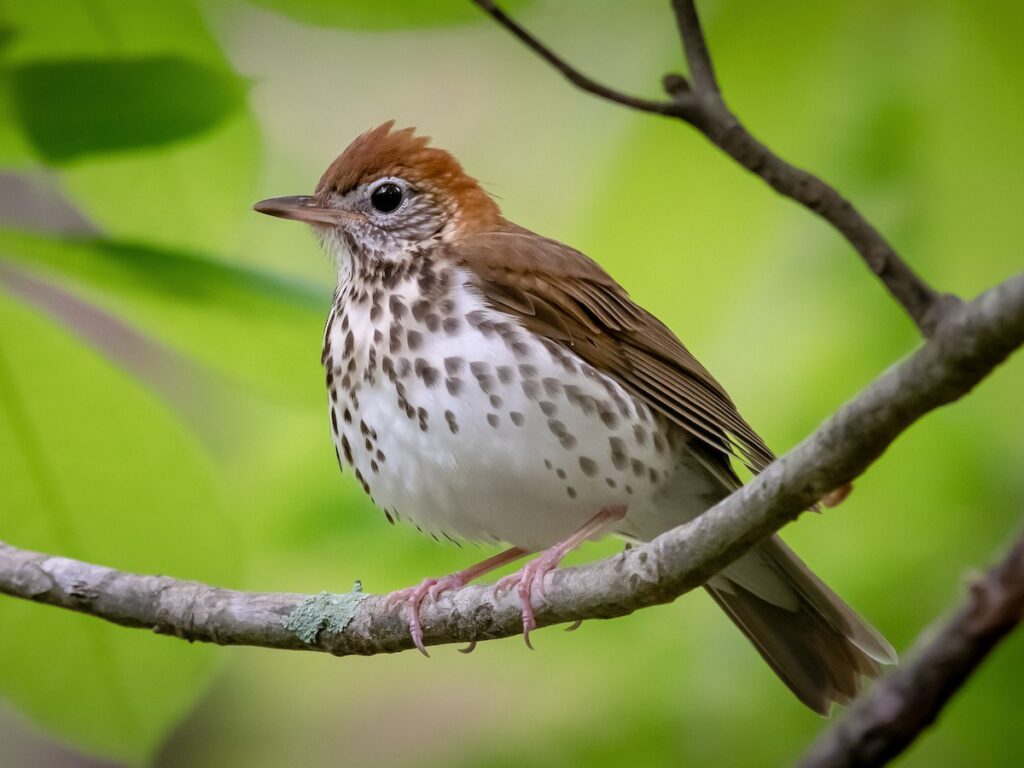
The Wood Thrush is known for its hauntingly beautiful flute-like song that echoes through deciduous forests in the spring and summer.
This medium-sized bird is warm brown above and heavily spotted with bold black markings on its white chest. Its large eyes and slightly pot-bellied appearance make it distinct among thrushes.
Identification Details:
- Scientific Name: Hylocichla mustelina
- Wingspan: 11–13 inches
- Length: 7–8.5 inches
- Weight: 1.4–1.8 oz
- Habitat: Moist, mature forests
- Diet: Insects, earthworms, fruits
Wood Thrushes are most active during dawn and dusk, hopping on the forest floor for food. They are sensitive to habitat destruction, making them a priority for conservation.
4. Spotted Towhee
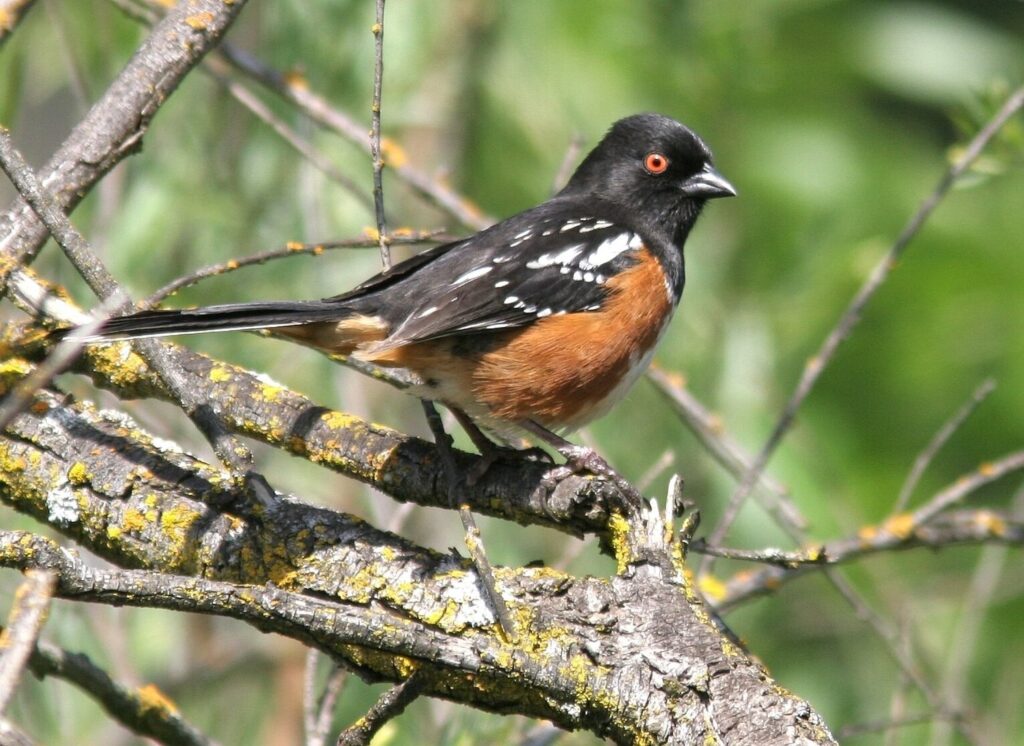
This striking bird has deep brown to black upper parts and heavily spotted white markings on the wings and flanks. The white spots on the dark back give it a dramatic look, especially in sunlight.
Spotted Towhees are ground-dwelling birds often seen scratching through leaf litter with both feet, searching for insects or seeds.
Identification Details:
- Scientific Name: Pipilo maculatus
- Wingspan: 10.5–11.8 inches
- Length: 6.7–8.3 inches
- Weight: 1.2–1.7 oz
- Habitat: Shrubby forests, grasslands, suburban gardens
- Diet: Seeds, insects, fruits
They are commonly heard before they’re seen, as their trilling songs echo from the underbrush. Look for their red eyes and bold black hood in males.
5. Song Thrush
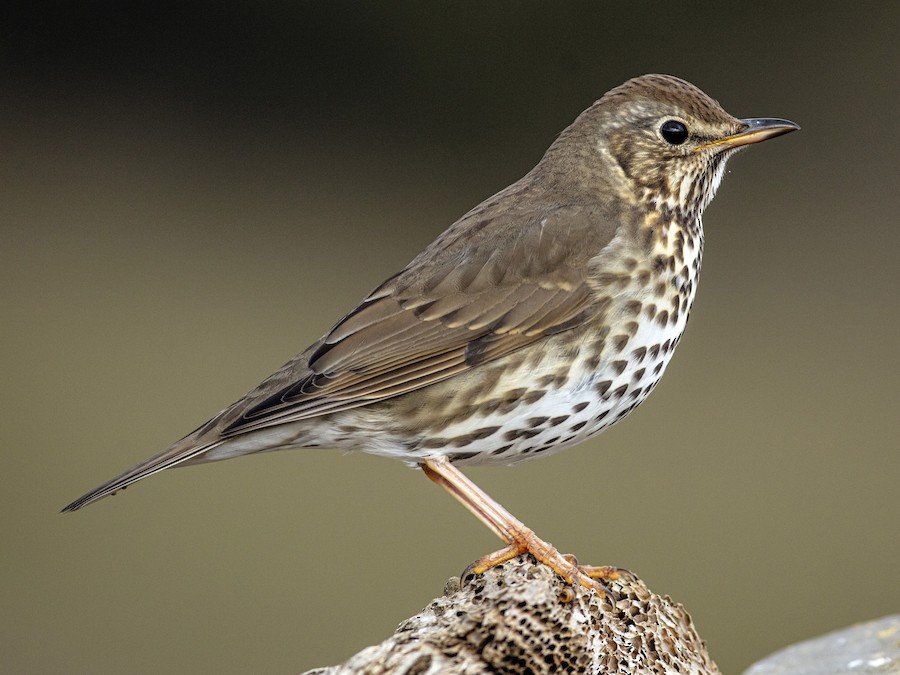
The Song Thrush is a European native but has also been introduced in other parts of the world. It has a brown back with warm, white underparts covered in dark, teardrop-shaped spots.
This bird is well-loved for its melodic song and can often be found perched in gardens or parks, repeating musical phrases.
Identification Details:
- Scientific Name: Turdus philomelos
- Wingspan: 13–15 inches
- Length: 8.7–9.4 inches
- Weight: 2.5–3.5 oz
- Habitat: Woodlands, parks, gardens
- Diet: Earthworms, insects, berries
It cracks snail shells on rocks to get to the meal inside—a behavior unique to this species.
6. Brown Creeper
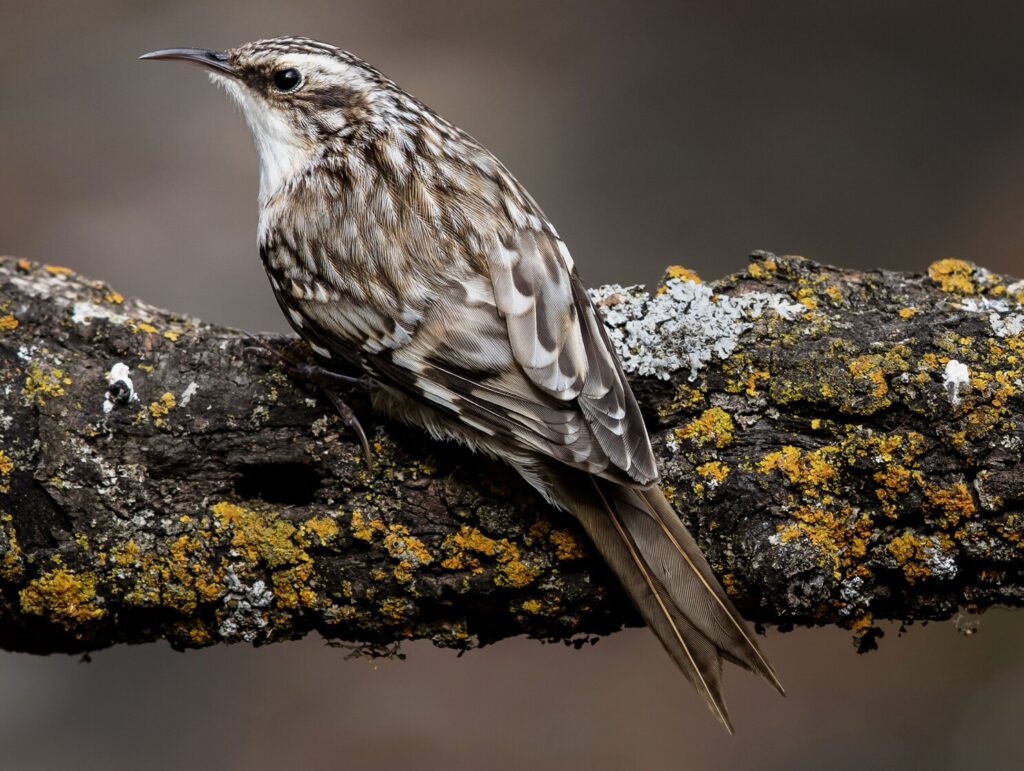
Tiny and tree-hugging, the Brown Creeper blends in perfectly with bark. Its brown back is streaked with white, while the underparts are pale and slightly spotted.
It climbs trees in a spiral fashion, using its stiff tail for support, much like a woodpecker.
Identification Details:
- Scientific Name: Certhia americana
- Wingspan: 6.7–7.9 inches
- Length: 4.7–5.5 inches
- Weight: 0.2–0.4 oz
- Habitat: Coniferous and mixed forests
- Diet: Insects, spiders
Its high-pitched call and camouflage make it a fun challenge to spot. A great find for dedicated birders.
7. White-throated Sparrow
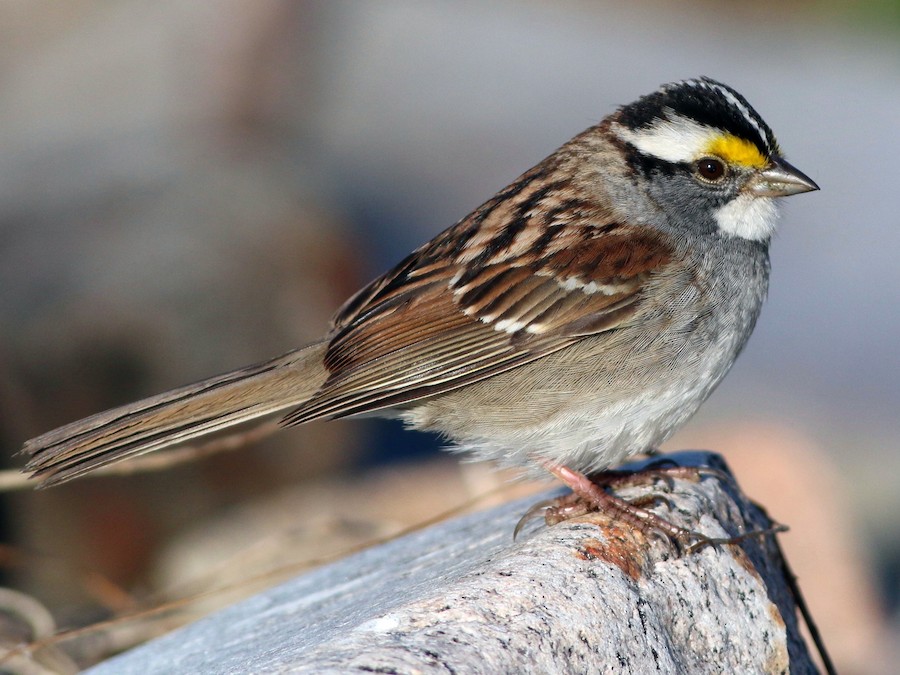
While primarily known for its white throat, this sparrow also features brown streaked plumage with fine white spotting along its body and wings.
This bird is a winter favorite in many parts of the U.S., often seen in mixed flocks or hopping beneath bird feeders.
Identification Details:
- Scientific Name: Zonotrichia albicollis
- Wingspan: 7.9–9.1 inches
- Length: 6.3–7.1 inches
- Weight: 0.8–1.1 oz
- Habitat: Forest edges, brushy fields
- Diet: Seeds, insects, berries
It has a distinct yellow spot between the eye and bill, adding a splash of color to its earthy tones.
8. Ladder-backed Woodpecker
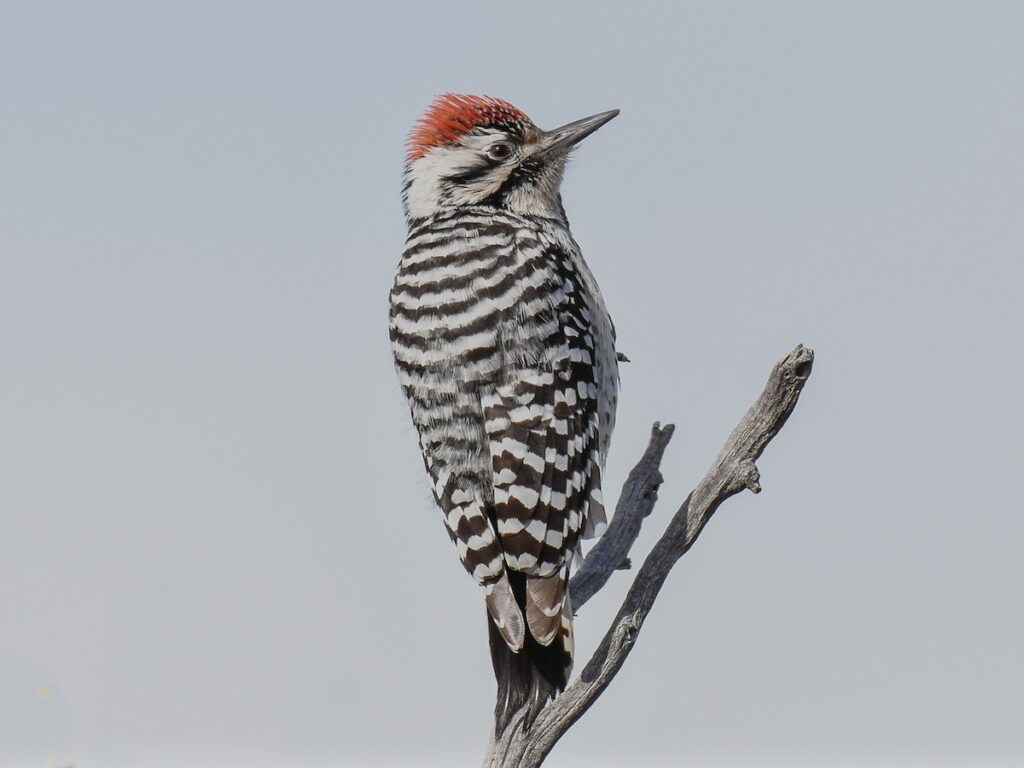
This small woodpecker features black and white barring on its back and a brownish head and body with white spots on the flanks and wings.
Males have a small red crown patch, while females do not.
Identification Details:
- Scientific Name: Dryobates scalaris
- Wingspan: 13 inches
- Length: 6.3–7.1 inches
- Weight: 0.7–1.2 oz
- Habitat: Arid scrub, desert trees
- Diet: Insects, cactus fruits, sap
They’re often found in the southwestern U.S. and Mexico. Their subtle coloring blends well with dry, brushy environments.
9. Ovenbird
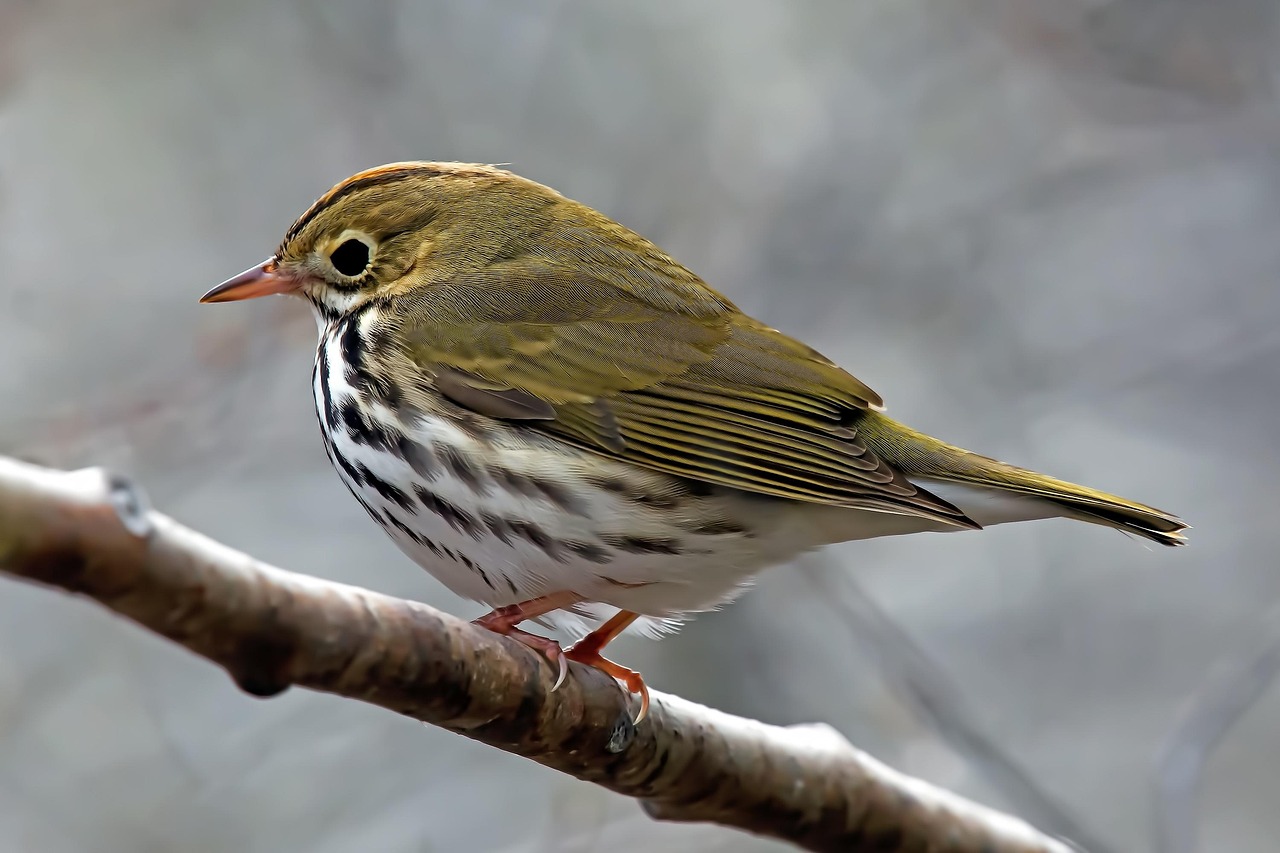
Despite the name, the Ovenbird is a warbler, not a thrush. It has an olive-brown back and white underparts with bold dark spots, particularly on the chest.
Its name comes from the domed “oven-like” nests it builds on the ground.
Identification Details:
- Scientific Name: Seiurus aurocapilla
- Wingspan: 8–10 inches
- Length: 4.3–5.5 inches
- Weight: 0.6–1 oz
- Habitat: Mature forests
- Diet: Insects, spiders
Their “teacher-teacher-teacher” call is often heard in eastern forests during spring.
10. Hermit Thrush
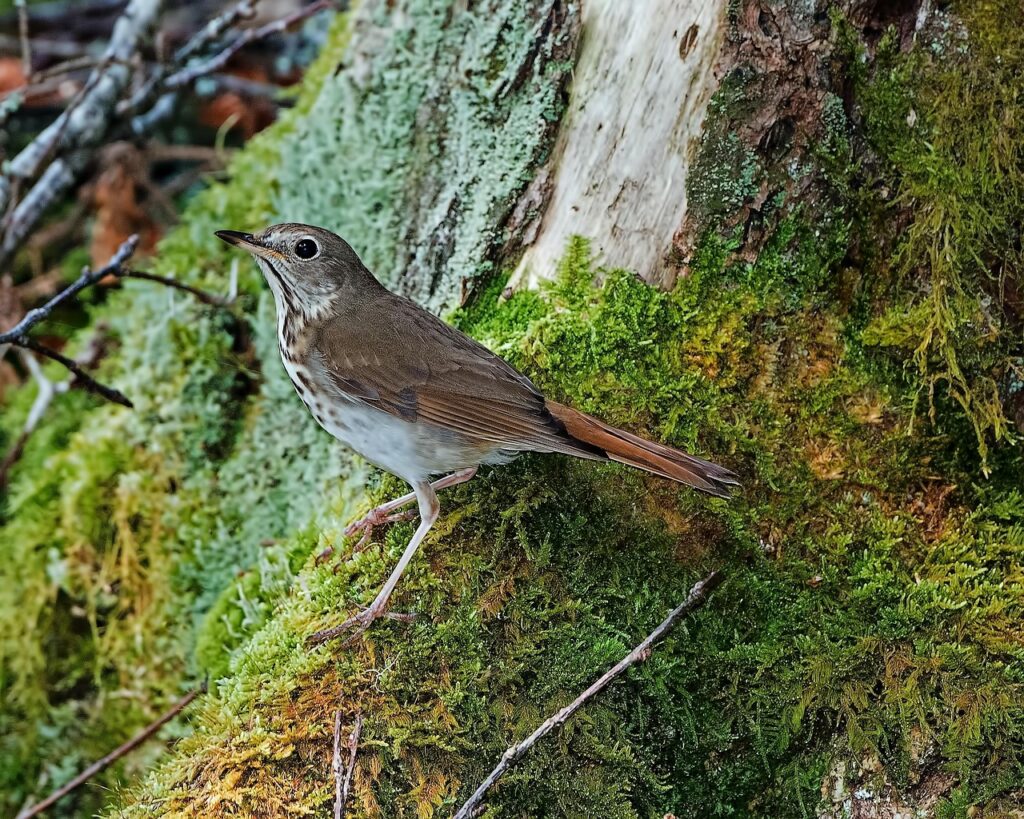
The Hermit Thrush has a warm brown back and head with a pale, spotted chest and reddish tail. Its soft, melodious call is considered one of the most beautiful bird songs in North America.
It’s a solitary bird, often seen alone in quiet forests.
Identification Details:
- Scientific Name: Catharus guttatus
- Wingspan: 9.8–11.4 inches
- Length: 5.5–7.1 inches
- Weight: 0.6–1.1 oz
- Habitat: Mixed and coniferous forests
- Diet: Insects, berries
The rusty tail and hesitant behavior make it distinct from other similar-looking thrushes.
11. Eastern Screech-Owl (Brown Morph)
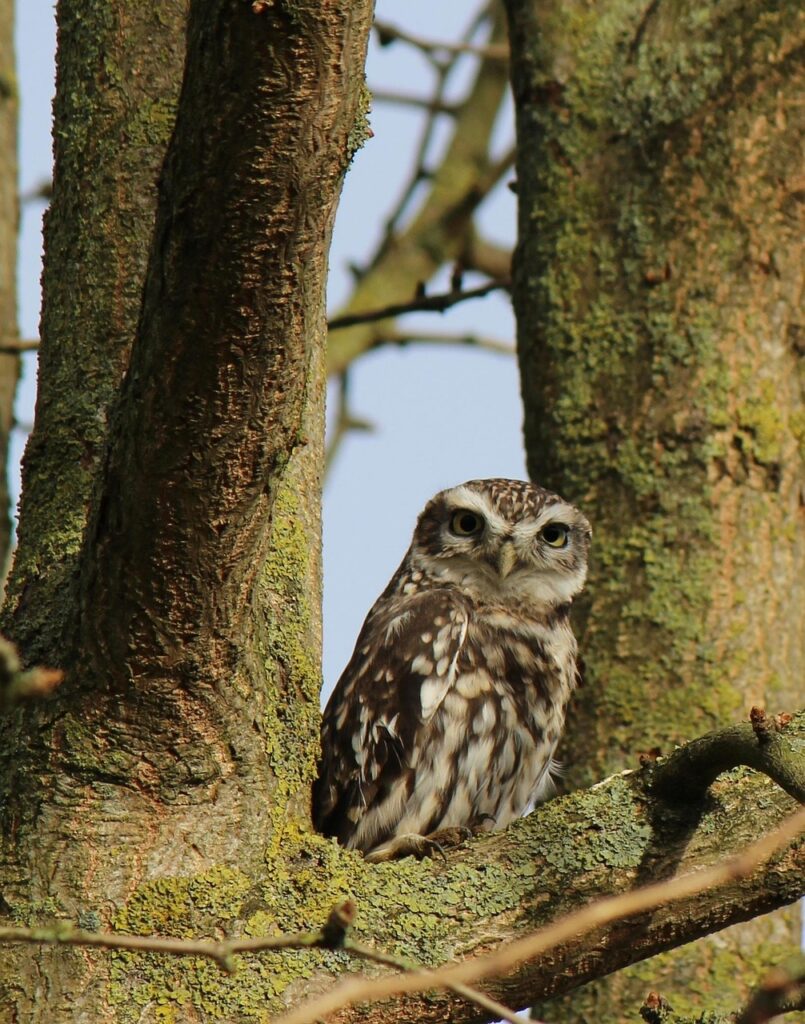
This small owl comes in gray and brown morphs. The brown variety has subtle white spots and streaks, blending seamlessly with tree bark.
It’s often heard trilling at night and roosts in cavities during the day.
Identification Details:
- Scientific Name: Megascops asio
- Wingspan: 18–24 inches
- Length: 6.3–9.8 inches
- Weight: 4.3–8.6 oz
- Habitat: Forests, suburbs, orchards
- Diet: Rodents, insects, small birds
Despite its small size, this owl is a fierce hunter and a master of camouflage.
12. Sedge Wren
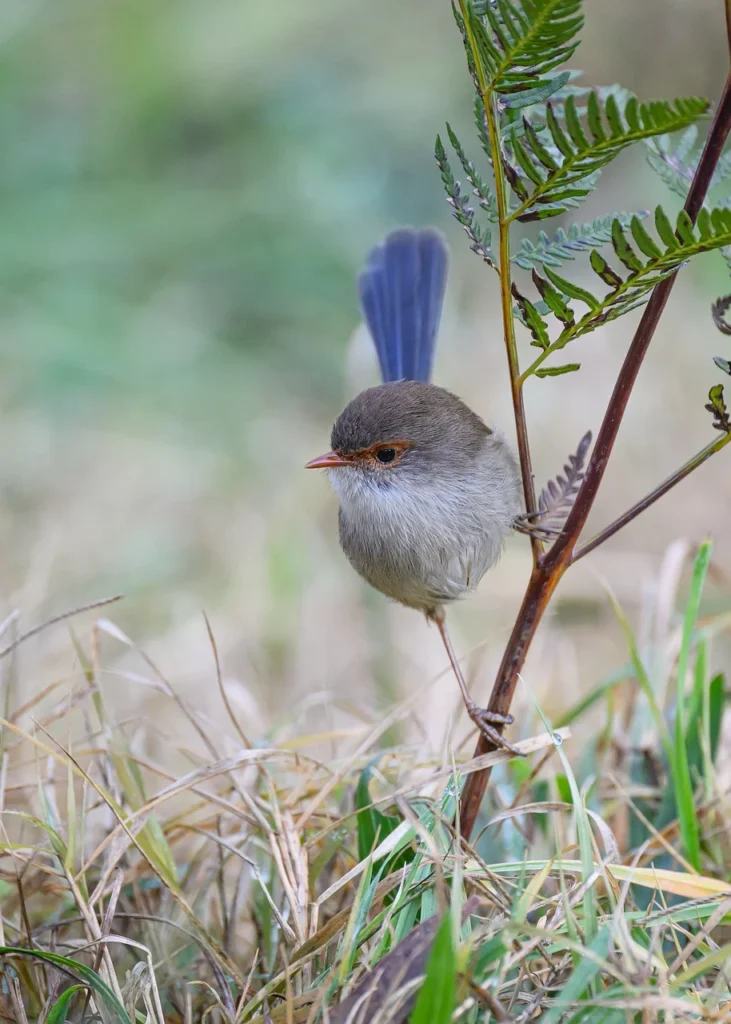
The Sedge Wren is a secretive, tiny brown bird with white streaks and spots across its back and wings. Its behavior is jittery, often hopping quickly between tall grasses.
It sings a repetitive chattering call from hidden perches.
Identification Details:
- Scientific Name: Cistothorus stellaris
- Wingspan: 5.5–6.7 inches
- Length: 4.3 inches
- Weight: 0.3–0.4 oz
- Habitat: Wet meadows, sedge marshes
- Diet: Insects, spiders
Because of their elusive habits, spotting a Sedge Wren can be a rewarding experience for patient birdwatchers.
FAQs
1. Why do some brown birds have white spots?
White spots can help with camouflage, mating displays, or species identification. They often break up the bird’s outline, helping it blend into its surroundings.
2. How do I identify a brown bird with white spots?
Look for size, beak shape, habitat, flight pattern, and specific markings like chest spots or wing bars to narrow it down.
3. Are brown birds with white spots found only in forests?
Not necessarily. Many of these birds also live in grasslands, marshes, deserts, and suburban backyards.
4. Can female and male birds look different in these species?
Yes, in some species like the Spotted Towhee or Ladder-backed Woodpecker, males and females differ slightly in coloration.
5. What’s the best time of day to see these birds?
Early morning and late afternoon are ideal, especially during spring and fall migration seasons.
Conclusion
Brown birds with white spots might not be as flashy as brightly colored species, but they carry a unique beauty all their own. Whether you’re scanning treetops, watching feeders, or exploring trails, these birds offer a rewarding birdwatching experience. From the haunting song of the Hermit Thrush to the energetic scratching of the Spotted Towhee, each one brings something special to the natural world.
Their subtle spotting isn’t just for looks—it plays an important role in their survival. And by learning how to identify these birds, you’re deepening your connection with nature and sharpening your skills as a birder.
So next time you see a small, brown, speckled bird hopping along your fence or singing from the shrubs, take a closer look. It might just be one of these 12 fascinating species, right in your own backyard.
